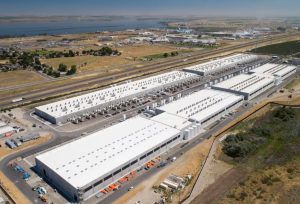In the lobby of the Media Lab, the innovative hub of the Massachusetts Institute of Technology, an AI-powered assistant named Oscar is ready to “talk trash.” Created by Intuitive AI, Oscar uses computer vision and machine learning in real time to guide you to the correct bin – landfill, recycling, compost, or paper – based on the item you are going to dispose.
Hassan Murad, CEO and co-founder of Intuitive AI, notes that people need three seconds to decide where to throw their trash and get the correct bin only 30% of the time. Deployed in various locations such as universities, airports, and stadiums, Oscar nudges users toward better habits through visual cues and feedback, creating an engaging and educational waste disposal experience.
The rise of the sustainable consumer
Oscar is one of many tools companies are using to engage with their customers and meet their expectations for a more sustainable, healthier, and less wasteful lifestyle. Today’s consumers are searching for accessible, affordable, and environmentally responsible services and products. In turn, companies are being challenged – and inspired – to reimagine product design, delivery, and impact in ways that align with these expectations. Companies in almost all industries are feeling this pressure to innovate, which means it’s likely companies on your beat will need to address sustainability issues – if they aren’t already.
According to recent GlobeScan data, 49% of Americans purchased an eco-friendly product last month, up from 43% in July 2024. Sustainability is no longer a fringe consideration.
A McKinsey & Company report highlights that products with environmental, social, and governance-related claims experience a 1.7 percentage point increase in sales growth compared to those without such claims. Millennials and Gen Z, in particular, are willing to pay more for environmentally friendly products.
Simon-Kucher’s 2024 Sustainability Study, which surveyed over 6,000 consumers in six countries, reports that 64% of shoppers rank sustainability among their top three purchasing factors.
“Imagine a world in which consumers have access to affordable, useful, and less wasteful products at scale. These kinds of sustainable products won’t force consumers to pay a high price premium or a quality penalty, and they include physical goods that last for generations or food that is fundamentally healthier. Meeting the pent-up demand for such sustainable solutions is perhaps the most lucrative innovation challenge of the 21st century.”, says Nicolai Broby Eckert, Senior Partner at global consultancy firm Simon-Kucher and co-author of the book “The Demand Revolution”.
The six plays for sustainable business success
In his LinkedIn article, Six strategies to make your future sustainable… and profitable, Eckert outlines six core plays that companies can use to align sustainability with business success:
The brand play: Build a brand identity rooted in sustainability. The apparel manufacturer Patagonia is a prime example, championing environmental practices and embedding them into its brand story. Consumers respond positively to brands that genuinely stand for something and offer sustainable value.
The longevity play: Create products designed to last. Patagonia’s Worn Wear program promotes repairability and reuse, helping reduce apparel’s carbon footprint by up to 60%. Similarly, French retailer Fnac Darty launched a service program to repair appliances, reduce waste, and extend product life.
Mass affordability play: Scale up to offer sustainable products at affordable prices. Tesla embodies this with its mission to make electric vehicles mainstream. Innovations in manufacturing and direct sales allow Tesla to lower production costs and increase accessibility, while maintaining its own charging infrastructure to support growth.
Ease-of-choice play: Remove barriers to sustainable purchasing. German company Rügenwalder Mühle made vegetarian and vegan products readily available in-store next to meat options. Their website and packaging emphasize equal representation and sustainability, making sustainable choices easier for everyday consumers.
Antiwaste play: Center innovation around eliminating waste. Ford, for instance, uses residue from roasting coffee beans as material for car parts. Adidas partners with Parley for Oceans to create apparel from ocean plastic. Classic deposit-and-return systems also reflect this principle—consumers get money back when returning plastic bottles, encouraging recycling.
Engagement play: Foster consumer participation in sustainability. The LEGO Group involves customers through its Replay program, community platforms, and packaging shifts. In China, Alipay’s Ant Forest campaign leverages digital engagement on its app to promote eco-friendly action. Each time their clients take steps to reduce their emissions, like biking or going paperless, eco-friendly behaviors are turned into digital “green energy” points. These grow virtual trees in-app, which are then matched by real trees planted in China. Over 500 million people have joined, helping plant more than 100 million trees.
Consumer expectations and industry impact
While sustainability has become a key driver of consumer behavior, motivations are complex. The Global Sustainability Study 2024 reveals that people are motivated by different reasons – for some, it is the sense of responsibility, concern for the environment, or the desire to contribute to a better future. Others are influenced by peer pressure, the wish to feel good about their choices, or the need to set an example.
However, this rising interest is paired with some skepticism. Today’s consumers are more discerning. Seventy percent actively verify companies’ sustainability claims, and more than half believe their favorite brands may be greenwashing. Transparency and trust have become central to brand loyalty.
Consumer expectations also vary by industry. Sectors with large environmental footprints – like energy, transport, and construction – face higher demands for sustainability. In contrast, industries such as finance are under less pressure but still lag in visible sustainability efforts.











